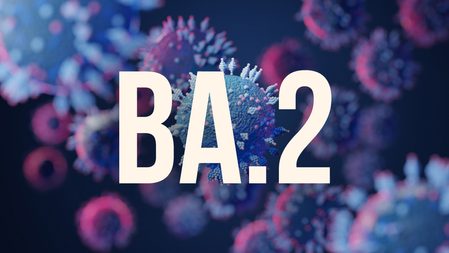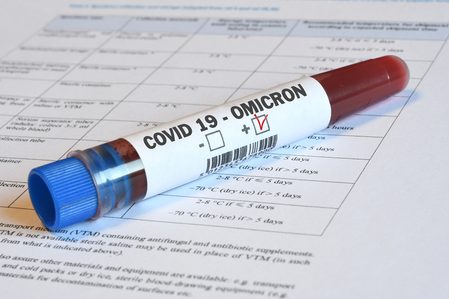SUMMARY
This is AI generated summarization, which may have errors. For context, always refer to the full article.
![[ANALYSIS] Assessing the COVID-19 pandemic in the Philippines at Alert Level 1](https://www.rappler.com/tachyon/2022/03/Assessing-the-COVID-19-Pandemic-in-the-Philippines-at-Alert-Level-1.jpg)
As I had anticipated three months ago, the passing of the Omicron variant has given the Philippines a period of respite from the COVID-19 pandemic. Unlike many of our neighbors in East Asia, our daily case numbers, both in the NCR and nationwide, are low and the risk of transmission is also very low. This is the beginning of the end of the pandemic.
How do we explain the current period of calm? Simply, the Filipino people are enjoying the protection of significant hybrid immunity from both the Delta and Omicron surges and the success of our ongoing national vaccination campaign, especially in our highly urbanized areas.
To understand this phenomenon, we have to appreciate that all previous surges in our country have been driven by novel variants that have entered and replaced their less transmissible viral cousins. At this time, there are countries in East Asia, especially South Korea and Vietnam, that are experiencing the explosive force of the Omicron variant. This week, South Korea was averaging 400,000 new daily cases while Vietnam was reporting numbers above 250,000 every day. These numbers are astronomically high because these countries were able to limit previous surges of COVID-19. In a sense, the Omicron surge is their first major surge of the pandemic. And they can allow these numbers to explode because the Omicron variant is relatively mild and their populations are vaccinated.
Nonetheless, we expect that South Korea and Vietnam will also experience pandemic calm when the Omicron wave recedes behind them.
Here in the Philippines, our Omicron surge was the largest we had in the past two years, but the numbers were not as dramatic as our neighbors because we had significant natural immunity from the Delta, and maybe even, Alpha/Beta surges, and we were not testing as much as the other countries in East Asia.
What about in Europe? What is happening in Europe? Europe is experiencing a second Omicron wave, driven this time by the Omicron BA.2 subvariant. The first and earlier Omicron wave during the winter months was due to the BA.1 subvariant. Since the Omicron BA.2 subvariant is more transmissible than the BA.1 subvariant – estimates suggest that it is about 30% to 50% more transmissible – we should not be surprised that a replacement surge is taking place. This conjecture is supported by the observation that a country like Denmark where BA.2 became dominant earlier this year during the first wave is not experiencing a surge in the current European second Omicron wave.
Here in the Philippines, we experienced a double BA.1/BA.2 Omicron wave in January. This was a blessing in disguise because it means that we will not see a second BA.2 Omicron wave. That BA.2 wave has already passed us, leaving significant hybrid immunity in its wake.
But what about masking? Is masking responsible for the current calm that we are experiencing in our country? One expert has claimed that our masking levels in the Philippines are keeping numbers down. Is this possible? Unlikely. Modeling from the University of Washington’s Institute of Health Metrics and Evaluation showed, surprisingly, that given the high transmissibility of the variant, masking cannot prevent an Omicron wave from emerging. The IHME modeling is supported by the empirical evidence from South Korea where some of the highest mask compliance rates in the world have not been able to suppress their Omicron wave.
Contrast South Korea with Denmark. Denmark lifted all of its masking and social distance requirements in early February. Even without masks, the numbers of new daily cases in Denmark continue to fall. Together, this data suggests that masking as a pandemic control tool is not as effective for limiting the spread of the Omicron variant, though elderly and vulnerable Filipinos should still be encouraged to mask since masks can still help individuals from getting sick themselves.
And the current period of calm in the pandemic certainly cannot be explained by the wearing of face shields! A social media exchange between Professor Jose-Luis Jimenez of the University of Colorado, Boulder, one of the world’s experts on aerosol science, and a Filipino medical doctor at the DOH earlier this year, convincingly demonstrated, to the public embarrassment of our kababayan, that face shields do not significantly prevent the spread of SARS-CoV-2 in a population because the virus is aerosolized. SARS-CoV-2 spreads like cigarette smoke and everyone knows that face shields cannot really prevent cigarette smoke from spreading. In the end, the most potent explanation for the period of calm in the current pandemic in our country is the significant hybrid immunity that our people possess against COVID-19.
What does this mean going forward? We have to continue to vaccinate and to booster our people to prolong the hybrid immunity we possess at this time. Our current population immunity is waning gradually – it is slowly disappearing – so we should expect that new cases of COVID-19 should start to gradually increase sometime in the middle of this year if immunity lasts about 4-6 months. However, this should not be a cause of grave concern. Though antibody-mediated immunity – the missiles of our body’s army – wanes quickly, cell-mediated immunity – the tanks of our body’s army – is more robust. These cellular tanks should give our Filipino people enough immunity to prevent severe disease and death from COVID-19. Nonetheless, it will be important to consider boosting our senior citizens and other vulnerable kababayans later this year to help them be as protected as possible going forward.
For now, we have to continue to prepare for this endemic stage of the pandemic. We need to train our healthcare workers to triage COVID-19 positive patients so that most of our sick countrymen will remain at home to recover from their Omicron illness. We need to build stockpiles of anti-virals that can help our more vulnerable neighbors who get sick to fight off the infection in their homes. And we have to strengthen our healthcare infrastructure to be able to withstand future COVID-19 seasons when numbers ebb and flow.
Finally, a question I get all the time: When will COVID-19 become endemic? Is it only about numbers? No. Endemicity is not merely a medical or biological phenomenon where low cases loads signal that an illness is now endemic. In fact, in my view, it is primarily a sociological one. COVID-19 will become endemic once it does not threaten the healthcare infrastructure of our country. With endemic COVID-19, Filipinos will still get COVID-19, some of them will be hospitalized, and tragically, a few will still die. However, if most of them survive and most of them recover at home, then COVID-19 will cease to be the public health emergency that is at the heart of a pandemic.
This is why Omicron BA.2 is such a game-changer. First, it is highly transmissible. In fact, it is nearly as transmissible as some of the most transmissible viruses known with an estimated basic reproduction number of about 16. (This means that if a Filipino infected with Omicron BA.2 enters a McDonald’s restaurant in Taguig, then it is likely that he will infect 16 other non-vaccinated customers.) Measles, which is one of the most transmissible contagious diseases in history, has a basic reproduction number of around 18-20. A future variant of concern would have to be even more transmissible than BA.2 to outcompete this dominant variant in our archipelago to trigger a surge. This is becoming increasingly unlikely.
Omicron BA.2 is also relatively mild for those with some immunity against COVID-19, either from previous infection or vaccination, which means that we do not have to worry about vaccinating our entire population over and over again to prevent them from becoming infected with COVID-19. Since we expect that most of them will recover from Omicron, we can allow the disease to take its natural course. Once again, the focus will be on protecting our lolos and lolas, and those who are immunocompromised or who have co-morbidities. so that they do not get severe disease or die.
In sum, we thank God for the relative calm that we are experiencing at this time in the pandemic. The emergence of the Omicron variant has made the transition to endemic COVID-19 much more likely. We have to work together as one nation to accelerate this transition. – Rappler.com
Nicanor Austriaco, O.P. is a Professor of Biological Sciences and Professor of Sacred Theology at the University of Santo Tomas, and an OCTA Research Fellow.
Add a comment
How does this make you feel?


There are no comments yet. Add your comment to start the conversation.